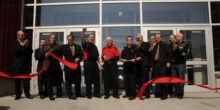N.H. unveils snowmobiling economic impact at $586 million per year
An economic assessment undertaken by The Institute for New Hampshire Studies at Plymouth State University shows that the sport of snowmobiling delivers an economic impact of $586 million to the state of New Hampshire annually. Spending by snowmobilers was 0.3 percent of the gross state product and more than 5.2 percent of all travelers’ spending in the state during the 2010-11 season.
Snowmobile traveler spending supported 2,394 direct full and part-time jobs, while indirect spending supported an additional 680 full and part-time jobs, according to the study funded through fundraising by the New Hampshire Snowmobile Association.
The average spending per visitor per day in New Hampshire was $79 per resident and $114 from non-residents. In addition to spending on their trips, each snowmobiler spends $1,307 annually and each out-of-state snowmobiler spent $1,179 annually on equipment, clothing, club membership, insurance and state license fees.

There were 56,645 registered snowmobiles in New Hampshire from May 2010 to April 2011. New Hampshire Fish & Game reports that 22,871 New Hampshire households and 10,450 out-of-state households registered snowmobiles during the 2010-11 season.
Survey results also show how much money snowmobilers spent on rooms and meals, registrations, gasoline, service and repairs during the 2010-11 season.
Distributed via mail, 3,000 surveys were mailed to a representative sample of New Hampshire snowmobile license holders. A total of 1,088 useable surveys were returned, which constitutes a 36 percent response rate.
Direct spending by snowmobile travel parties within New Hampshire was approximately $203 million, including preparation for and participating in the December 2010 to April 2011 season. Direct and indirect spending was approximately $298 million. The total impact on the state’s economy (direct, indirect and induced impacts) of this form of traveler spending was approximately $586 million.








